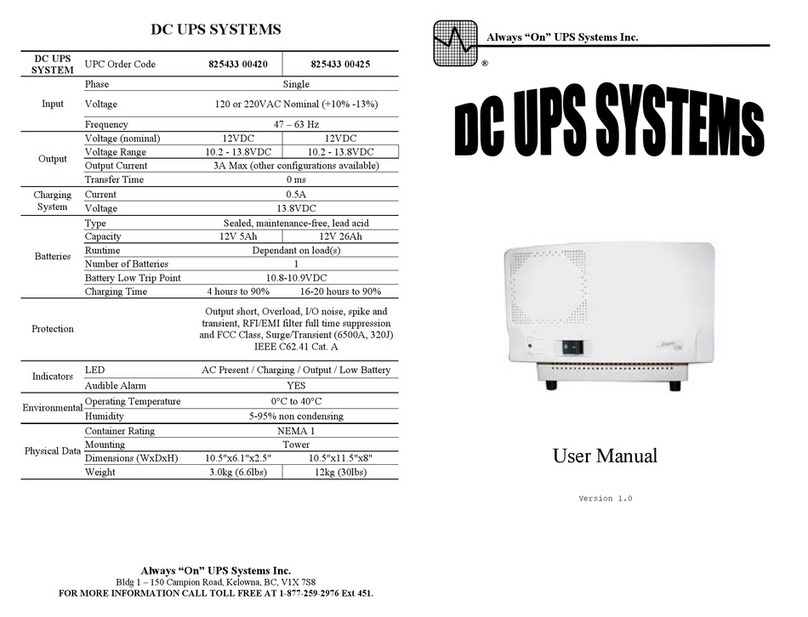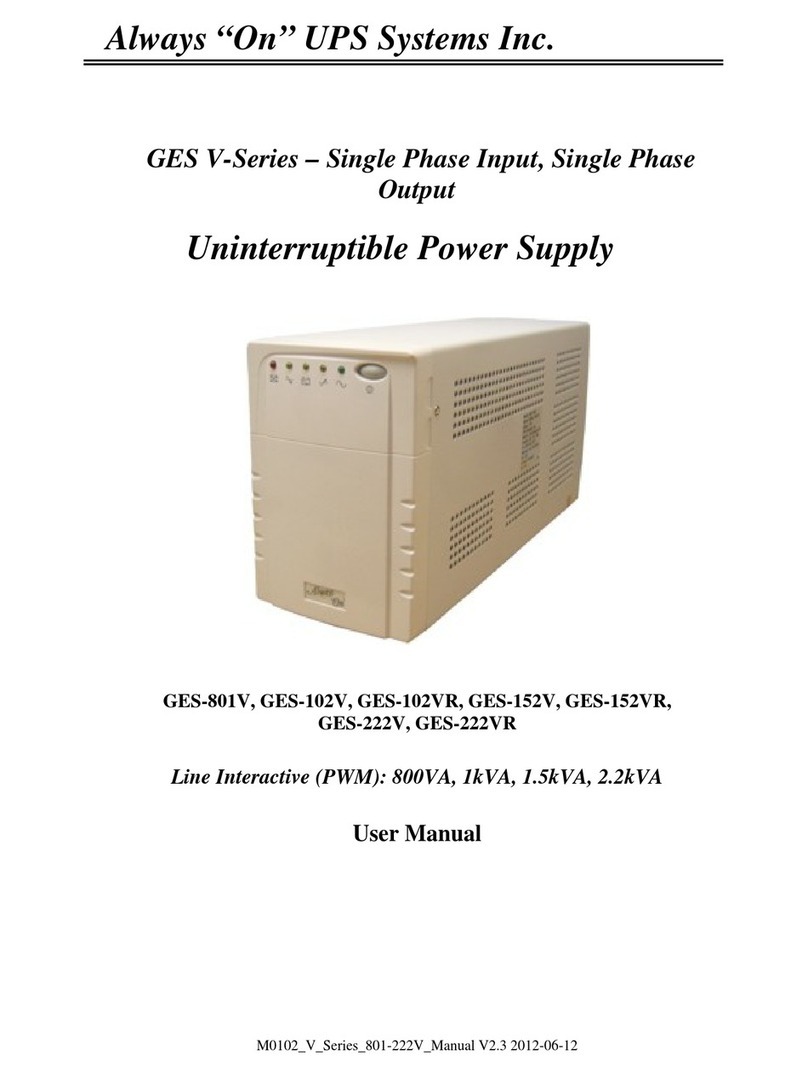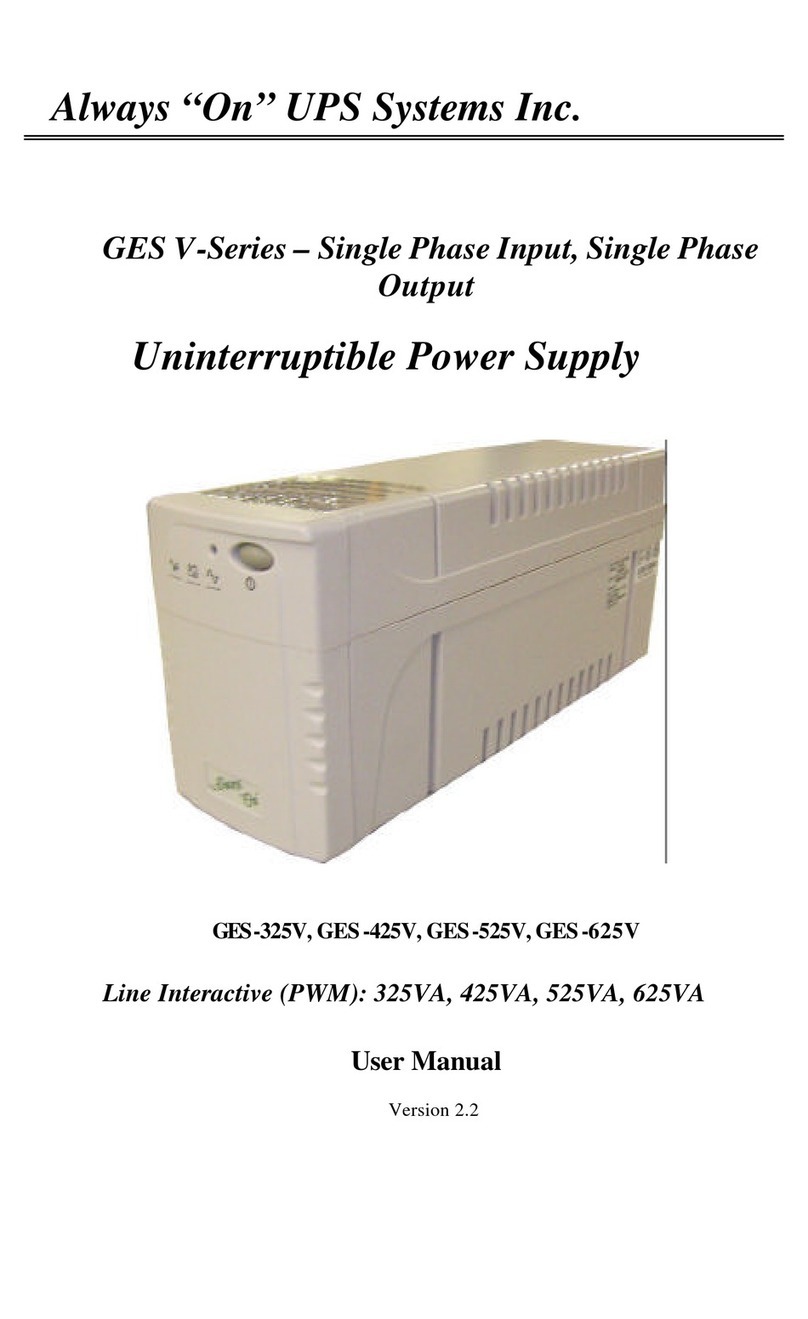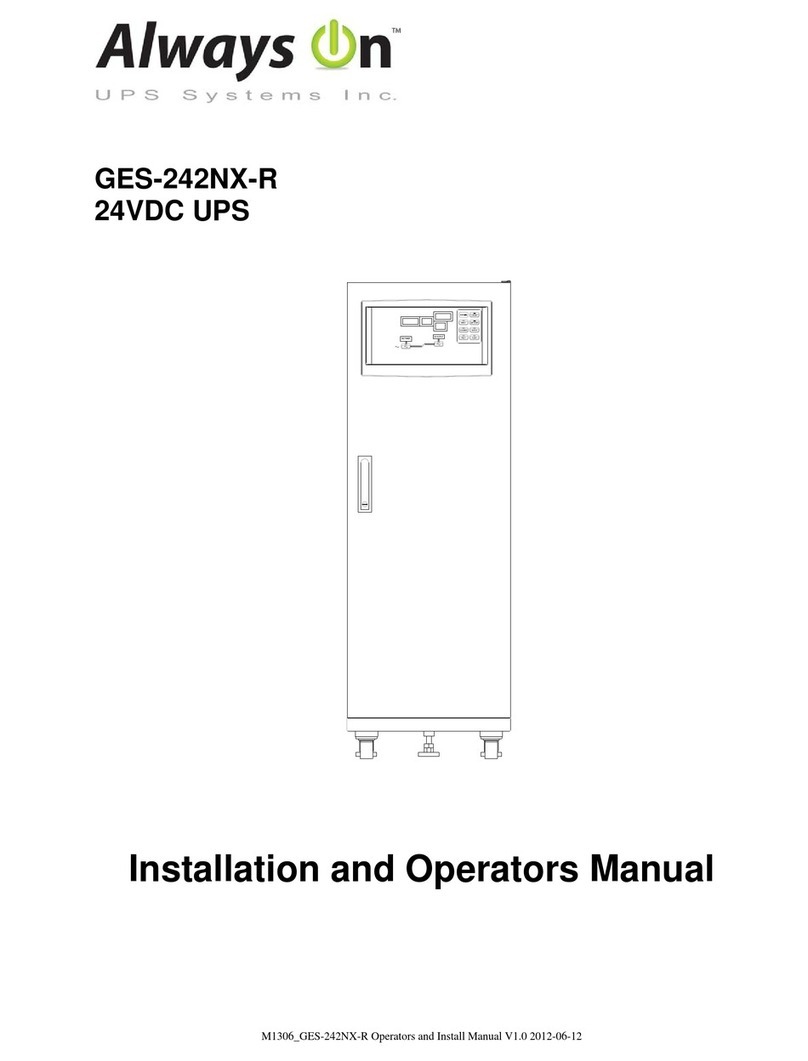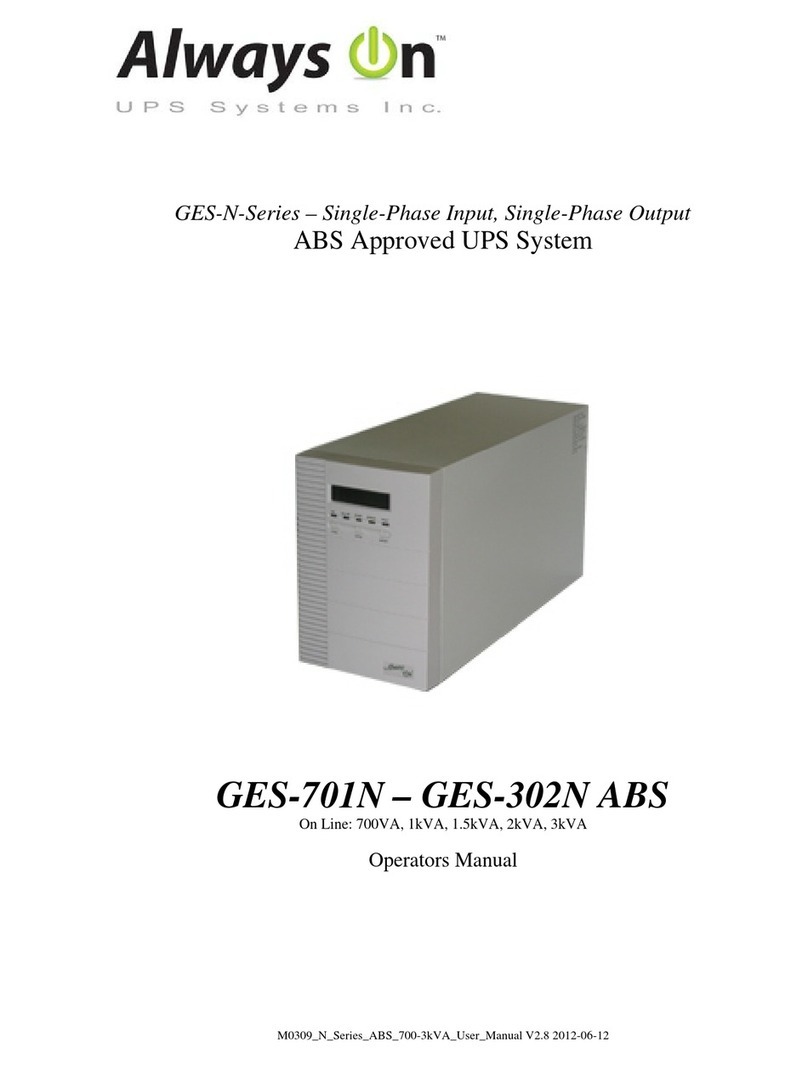
Always “On” UPS Systems Inc.
i
SAVE THESE SAFETY INSTRUCTIONS
1. This manual contains important instructions for the Limousin and should be followed during
installation and maintenance of the UPS and batteries.
2. The UPS contains voltages that are potentially hazardous. Please contact our dealers or
qualified personnel for service.
3. Only personnel whom are knowledgeable with batteries and the required precautions should
perform any servicing on the batteries. Keep unauthorized personnel away from batteries.
4. Replace the batteries with the same model number, type and rating.
5. CAUTION: Do not dispose of batteries in a fire. The batteries may explode.
6. CAUTION: Do not open or mutilate the batteries. Contents of the batteries are toxic and
especially harmful to the skin and eyes.
7. CAUTION: A battery can present a risk of electrical shock and high short circuit current.
The following precautions should be observed when working on or with the batteries.
− Remove watches, rings, or other metal objects.
− Use tools with insulated handles.
− Wear rubber gloves and boots.
− Do not lay tools or metal parts on top of batteries.
− Disconnect charging sources prior to connecting or disconnecting battery terminals.
− Make sure batteries are not inadvertently grounded. If inadvertently grounded, remove
source of ground. Contact with any part of a grounded battery can result in electric
shock. The likelihood of a shock will be reduced if ground faults are removed during
installation and maintenance (applicable to a UPS and a remote battery supply not
having a grounded supply circuit).
8. CAUTION: To ensure the safety and performance of the UPS, never load the UPS with a
hair dryer, heater, laser printer or other types of inductive loads.
9. The UPS has its own internal energy source (battery), therefore the output receptacles may
have electricity present even though the UPS is disconnected from the utility power.
10. The DC voltage provided from the internal battery is 12VDC.
11. Isolated Ground Wire refers to the wire connecting electrical equipment to ground.
The isolated ground wire (green or green with yellow stripe) must meet national wire
requirements.
12. The utility plug (wall plug) for the UPS must be equipped with a ground prong.
13. To avoid explosions, keep open flame and other heat emitting sources away from
batteries.
14. The battery has the potential to generate high voltages and currents that are dangerous.
To maintain secure operation and performance of the UPS, the user must exercise
regular basic maintenance. Please follow the precautions below:
1. Do not remove the UPS cover unless authorized by the factory. Removing the
cover will void the warranty.
2. The UPS can only be connected to a 2-pole/3 wire plug.
3. Do not install the UPS in an environment with excessive humidity.
4. Do not allow liquids or foreign objects to penetrate inside the UPS.
5. Allow for air circulation through the UPS. A minimum clearance of 10cm is
required on all sides.
6. Do not overload the UPS with appliances such as a hair dryer, heater, vacuum,
kettle, etc.
7. Keep the UPS away from direct sunlight and heat-emitting sources.
8. Install the UPS as close as possible to the load for maximum protection.
10. Storage Requirements
1. Recharge the UPS batteries every 6 months for no less than 8 hours at a time.
2. In a high ambient temperature environment, recharge the UPS batteries every 3
months for no less than 8 hours at a time
